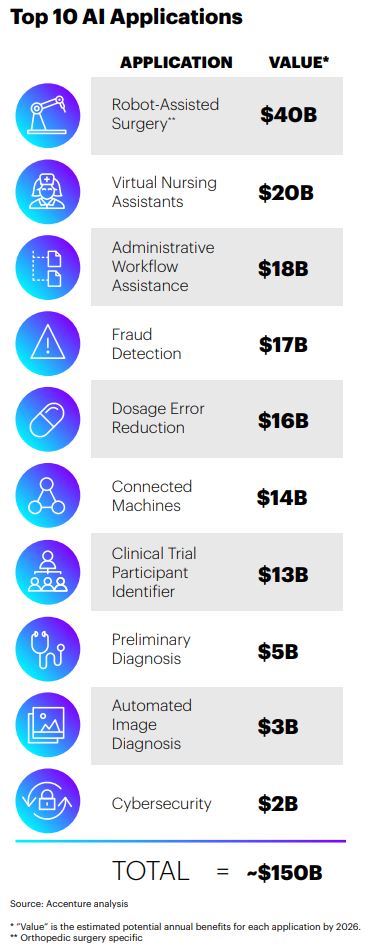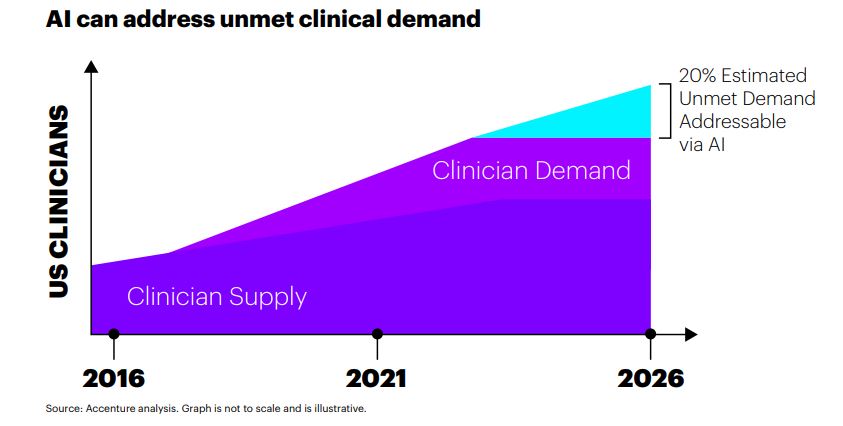Telemedicine: Meet Customer Expectations in Healthcare with AI
Blog: Bizagi Blog
There’s nothing more important than our health. So it can be annoying when you’re left waiting on healthcare services. I know I’m not the only who has been left waiting in frustration, especially when you compare the apparent inefficiency of healthcare to the instant gratification we see in other areas of our lives today.
“Customers are ready for digital. Standing in line to pick up a prescription in a stapled paper bag isn’t retro-chic, it’s just a waste of time.” Forrester is right. The healthcare industry is being too slow when it comes to adopting digital.
“Healthcare has lagged behind other industries in digital transformation and customer obsession for far too long. Now’s the time for digital business professionals to champion culture-changing customer obsession and digital transformation before it’s too late,” Forrester writes in its 2018 report: ‘The Amazon Effect Is Primed To Disrupt Healthcare – Digital Will Disrupt Bricks-And-Mortar Healthcare’.
The need to help patients with telemedicine
Virtual care is a growing trend – combining care outside and inside of the hospital. With an ever-growing and increasingly aging population, virtual care solutions can help to provide health services to a growing number of patients who are demanding a digital, on-demand service. Virtual health solutions could help providers offer a better discharge experience and reduce costs.
“We know that nurses don’t really want or have a lot of time to do patient discharge,” Brian Jack, MD, professor and chair of the Department of Family Medicine at Boston University School of Medicine and Boston Medical Center told Healthcare IT News.
“Yet, properly conducting thorough patient discharge sessions can significantly help to improve quality and reduce costs. In fact, some 20% of patients experience post-discharge adverse events and about 20% of Medicare patients are readmitted to the hospital.
And the public are realizing the benefits of telemedicine. A survey by Virtual Visits Consumer Choice of over 5,000 patients found that 77% of patients are willing to conduct a virtual care encounter, and 19% of patients have already done so.
70% of patient respondents said they were willing to use virtual care for various visit types. E-prescribing, pre-surgical consults, some post-operative appointments, receipt of oncology results, and chronic disease management check-ins ranked as the most preferred virtual care types.
Enter IoT and AI health applications
Medical device and pharmaceutical companies are beginning to build the Internet of Things (IoT) and artificial intelligence (AI) capabilities into their products to enable virtual care. These tools will help to reduce the burden on physicians.

The Internet of Things holds great potential for telemedicine. According to Compare the Cloud, “There are currently 3.6 billion internet users across the globe, and by 2021 it’s expected that 28 billion ‘things’ will be connected to wireless networks and infrastructure, with 16 billion of those classified as IoT.”
IoT devices are already being used to monitor personal health and there are even instances of inter-connected IoT devices sharing critical information with doctors. “Facilitated as a diabetes coach to monitor glucose levels, check heart rates and track dementia patients, the advancing technology in each device allows them to transmit signals directly to a hospital in case of emergency,” highlights Compare the Cloud. This delivers the potential for saving time, money, and most importantly, patients’ lives.
Technologies like telestroke and biometric monitoring currently require manual clinician input, but AI will automate these services, bringing in clinicians only when critical care is necessary. IoT wearable devices will be able to monitor patients’ health and alert them if there is a problem, for example, sensors that detect the glucose levels of people who suffer from diabetes.
According to Accenture analysis, when combined, key clinical health AI applications can potentially create $150 billion in annual savings for the United States healthcare economy by 2026. This will be implemented through a range of applications, from life-saving robot-assisted surgery, saving an estimated $40billion to time-saving automated image diagnosis that’s projected to save $3billion.
A study was conducted using Babylon Health’s AI to evaluate the accuracy and safety of an AI-powered triage and diagnostic system. Overall, the Babylon AI-powered Triage and Diagnostic system was able to identify the condition modeled by a clinical vignette with accuracy comparable to human doctors and the triage advice recommended by the AI systems was, on average, safer than that of human doctors.
Not only will AI technology save money, but it offers a way solve the problem of rising labor shortage in healthcare. According to Accenture analysis, the physician shortage is expected to double in the next nine years. Thankfully AI can address an estimated 20% of unmet clinical demand.

Supporting technology with an Enterprise Health Cloud
But the right platform is necessary to support these technological advancements. Healthcare providers likely put an EHR system in place years ago. But as new features like AI have developed, gaps appear between new and legacy systems which makes the process disconnected and inefficient.
“The gold rush for EHRs and claims systems buried healthcare organizations in siloed data that they have still not managed to dig out from,” highlights Forrester. “Keep this lesson close to heart as you build and evaluate virtual care technologies. A connected digital health experience that you can easily integrate into your customer’s record will be substantially more valuable than a standalone wearable.”
A connected system supported by an Enterprise Health Cloud (EHC) can also help to fill the gaps between these systems and processes with automation. It is estimated that 43% of a doctor’s workday is spent on data entry rather than patient engagement, diagnosis and treatment. By automating administrative tasks, experts’ time can be freed up to complete more valuable tasks.
Bizagi helped neurological rehabilitation organization, Mentis Neuro Health to digitize its patient onboarding process in just 90 days by using an agile digital platform to deliver solutions faster. As a direct result, the clinicians are now able to offer treatment within 2-3 days, rather than 2-3 weeks. This faster treatment has led to a 21% growth in patient numbers and freed up specialist physicians from administrative work to focus on what they do best – deliver rehabilitation treatment.
With technology moving at such a fast pace, healthcare providers need to catch up and strike a balance between reducing costs, boosting efficiency and improving patient care. Customers expect the best experience when it comes to their health, so the pressure is on to deliver top customer service.
Don’t let your legacy EHR hold you back. Embrace a connected view of your systems and deploy automation to enable a slick and responsive customer service. To find out more about how we are helping healthcare providers respond, visit our healthcare page and ignite your digital transformation strategy with Bizagi’s Digital Business Platform.
The post Telemedicine: Meet Customer Expectations in Healthcare with AI appeared first on Bizagi Blog – Ideas for Delivering Digital Transformation.
Leave a Comment
You must be logged in to post a comment.







